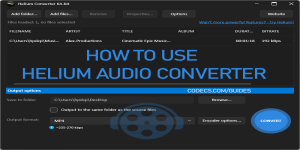AVC1 (Advanced Video Coding 1) is a variant of the H.264 video compression standard, also known as MPEG-4 Part 10.
It's one of the most widely used video codecs today, offering excellent compression efficiency while maintaining high video quality.
High Compression Efficiency:
AVC1 can reduce file sizes significantly compared to older codecs like MPEG-2, often achieving 50% smaller files with the same quality.
Broad Compatibility:
Supported across virtually all modern devices, browsers, and media players, making it ideal for streaming and distribution.
Scalable Quality:
Supports resolutions from mobile-friendly sizes up to 4K, with bitrates that can be adjusted based on bandwidth constraints.
Common Use Cases
AVC1 is the standard choice for streaming platforms like YouTube and Netflix, video conferencing applications, Blu-ray discs, and mobile video recording.
Its balance of quality and file size makes it perfect for both high-end production and everyday content creation.
Technical Considerations
The codec uses advanced compression techniques including motion compensation and transform coding. It supports various profiles (Baseline, Main, High) that offer different features and complexity levels.
Most modern hardware includes dedicated AVC1 encoding and decoding chips for efficient processing.
Getting Started
Most video editing software and encoding tools support AVC1 by default.
For web delivery, it pairs well with MP4 containers and is supported by HTML5 video players without additional plugins.
→ Download AVC Encoder Video Extension














How to Download HEVC Video Extension for Free
muchas gracias! soy de Peru y me sirvio.Thank's
Read More →Best Player for Subtitles (2025 Guide)
@P.A. Blok You're right, thanks for the feedback! We've updated the guide to clarify that VLC does auto-detect ...
Read More →How to Play HEVC Files in VLC Media Player (2...
@VanguardLH You're right, it'll be corrected. Thanks for pointing it out!
Read More →